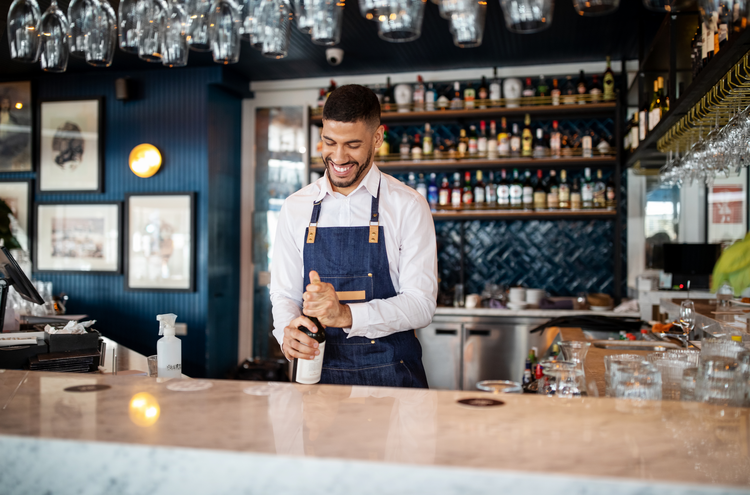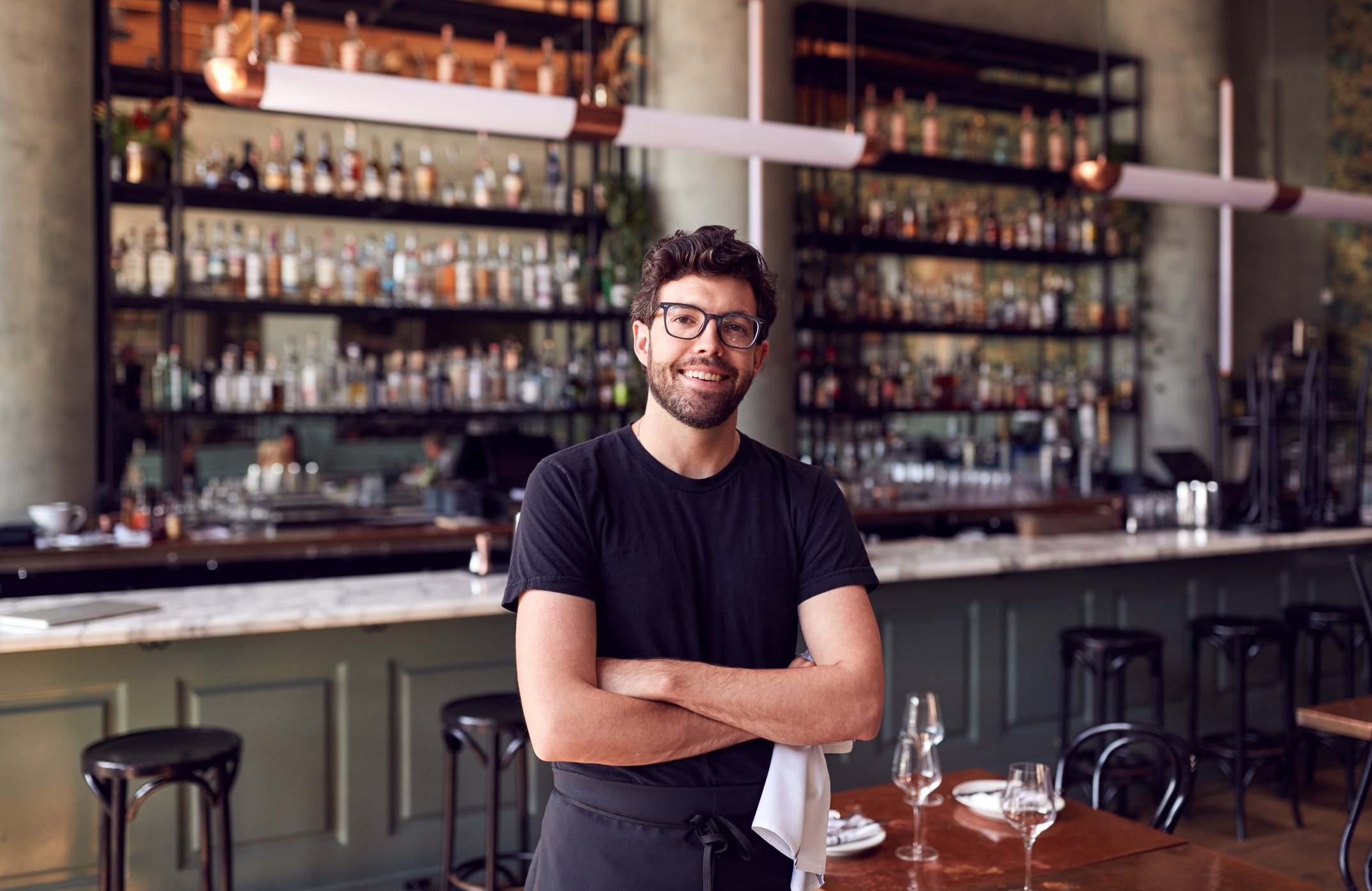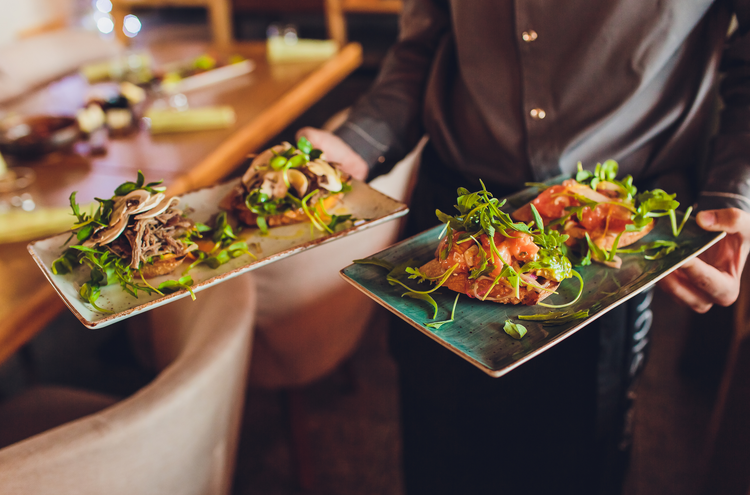Pricing menu items to maximize profit
Determining restaurant menu prices for your dishes can be tricky—you need to turn a profit, but you don’t want to scare potential diners away with sky-high prices. As a 30-year veteran of the restaurant world David Allred advises, “The goal is to pick a price within good practice industry standards, but to also pick a price that makes your guests happy.”
That’s why we’ve put together this handy guide packed with tips and strategies for how to price menu items fairly for both you and your customers.
Restaurant menu pricing 101
Before we get into the meat of menu pricing, let’s take a look at some common terminology used in restaurant pricing. Some of the terms you should know include:
- Direct costs – Direct costs are the amount you pay for the food you purchase before preparing it for your customers. Direct costs also include the amount you pay for food that spoils before it reaches a table.
- Indirect costs – Think about everything in your restaurant that isn’t food. The decor, lighting, seating, and more are all part of your indirect costs.
- Overhead – Overhead refers to the money you spend to keep your restaurant running. The cost of your building, utilities, marketing, and more are part of your overhead costs.
- Labor – The time it takes to prepare ingredients and cook the food is considered a labor expense. Your labor costs can vary widely depending on the complexity of your menu and the amount of work it takes to prepare your recipes.
- Volatile food costs – Today, all food costs seem volatile, but traditionally, volatile food costs refer to those that change with the seasons. Meat, fruits, and vegetables all have different prices depending on the time of year you use them and what’s in season close to you.
- Service – The cost of providing service to your customers is another factor to consider when calculating your menu costs. For example, if you’re a fast-casual style restaurant, your service costs won’t be as high as a fine dining establishment.
- Boundaries – Finally, boundaries refer to the floor and ceiling of what you can charge. You can determine boundary estimates by analyzing the menus of your nearest competitors.
Food pricing method #1: food cost
Now that you're familiar with some of the terminology frequently used in restaurant pricing, we’ll discuss two popular price calculation methods. The first pricing method is called the food cost method. This method involves the following steps:
- Identify the ideal food cost percentage – The food cost percentage is the ratio of the amount of money it costs your restaurant to procure food to the revenue generated when a customer orders that item from your menu. Typically, restaurants want their food cost percentage to fall between 28–35%. The lower the food cost percentage, the more profitable the menu item.
- Determining the cost of the items needed to make a dish – Then, you need to calculate how much it costs you to make a specific dish. Let’s say the raw materials needed to make your restaurant’s famous pasta dish cost you $7.00. This is your item cost, or raw food cost.
- Calculate your ratio – For example, if you determine that your food cost percentage is 30% and it costs you $7.00 to buy the items for your pasta dish, then you’d determine the food cost by dividing $7.00 by 30%. Your pasta dish would cost $23.33. This is an odd price, so you may want to round it down to $23.00 or even $22.99.
Benefits and drawbacks of food cost pricing
The biggest benefit of food cost pricing is the fact that it’s incredibly simple to calculate. All you need to do is track your raw material costs and portion sizes so that you know how much of each item goes into your dishes. You decide your ideal food cost percentage and do a little bit of quick math to get your final food cost calculation.
However, this method does come with some drawbacks too. If you want to maximize profit, some items may end up priced too highly to be competitive. Furthermore, fluctuations in raw material costs might require frequent menu price changes to maintain your profit margins.
Food pricing method #2: gross profit
A second menu pricing strategy is the gross profit method. Your gross profit is all of your food sales that take you over your break-even point. Remember, your break-even point needs to take into account all of the costs of running your restaurant, not just the raw food cost.
To calculate menu prices based on gross profit, you’ll use the following steps:
- Calculate your profit margin – This number is entirely up to you. All restaurants have a different ideal gross profit margin based on goals and financial needs. Let’s use a profit margin of 70% for the purpose of this example.
- Determine the cost of raw materials for the dish – You need to add the costs of the raw materials used to make a dish to determine its cost. We’ll use the $7.00 pasta dish example again.
- Apply the gross profit margin formula – The gross profit margin formula is gross profit margin = (menu price - raw material cost) / menu price. Therefore, if we wanted to achieve a gross profit margin of 70%, we would use the following calculation: 70% = (x - 7) / x. The menu price (x) would then equal approximately $24.00.
This method produces a slightly higher price than the food cost percentage method.
Benefits and drawbacks of gross profit pricing
Gross profit pricing can be beneficial because it helps you to protect your bottom line and provinces a little more cushion when prices are constantly in flux. This method can take a little more time and effort to calculate, though. It may also leave you with slightly less competitive prices.
Pricing a buffet menu
If your restaurant offers buffet-style dining, you’ll have a more unique approach to pricing your menu. There isn’t a set restriction on how much each customer will eat, however, you won’t have to worry about pricing each menu item separately. Instead, use the following guidelines:
- Assume each guest will eat approximately one pound of food
- Determine your raw materials cost for an average pound of food
- Use either the food cost or gross profit method to determine a fair price
Since some people will eat more and others less, your profits should be pretty balanced by using the one pound per person average.
Best methods for drinks pricing
You also need to consider how you price drinks in your establishment. Depending on your restaurant style, you might serve:
- Beer
- Wine
- Liquor
- Coffee and tea
- Juice
- Soft drinks
You can price your beverages based on a per glass basis. You’ll simply calculate the number of servings in a container to determine your menu cost for one glass. For example, let’s say a container of orange juice has eight servings and costs you $3.00. That means your cost per glass is about $0.38. You can apply your markup using either of the pricing methods discussed above.
Other factors to consider when determining menu pricing
Finally, other factors come into play when you sit down to decide how much to charge for each item on your menu, including:
- Demand for your services – Are you going to be the only Mediterranean restaurant in town, or is there another fast-casual place with a similar concept a few blocks away? If you have less competition, there will be more demand for the type of food you serve, and you might be able to charge a little more.
- Competitor pricing – You can also scout out your competitors and see what they charge for similar items. You don’t want to be too high or too low. One method you can use to see how people feel about your competitors is Nextdoor. Read your neighbors’ posts and reviews of similar local restaurants to get a sense of the response to their food prices.
Getting the word out about your new restaurant
The last few years have been tough for restaurants. Yet, many have managed to survive by implementing creative marketing tactics and flexibility. Encourage people to try your new eatery by utilizing Nextdoor to get the word out. This strategy helped Tortas Vegas stay open and thrive during the pandemic closures.
You can also use Nextdoor’s hyperlocal focus to reach your customers directly. You can offer local deals and specials on specific menu items while still allowing your business to profit. It might be helpful to look ahead when you price your items and build in a little cushion for those you think will make good specials in the future.
Nextdoor: Your source for hyperlocal small business support
Pricing your menu requires patience, research, and flexibility. You want to offer a fair price to your customers that honors the hard work of your team and factors in the costs of producing that delicious food. But once you find your pricing sweet spot, you’ll be able to see that success in your profit margin and your customers’ happy faces.
This is where Nextdoor can step in and boost your business to new heights. After you claim your free Business Page, you can take advantage of our hyperlocal focus. This allows you to target customers in your neighborhood, interact with them, and offer highly desired specials that your neighbors will love.
Sources:
Restaurant Engine. How to Determine Food Costs for a New Menu. https://restaurantengine.com/determine-food-costs/
Restaurant Owner and Manager. 4 Methods for Pricing Menu Items. https://rmagazine.com/articles/4-methods-for-pricing-menu-items-2.html
Restaurant Business Magazine. Costing Buffet Guidelines. https://www.restaurantbusinessonline.com/advice-guy/costing-buffets-guidelines






